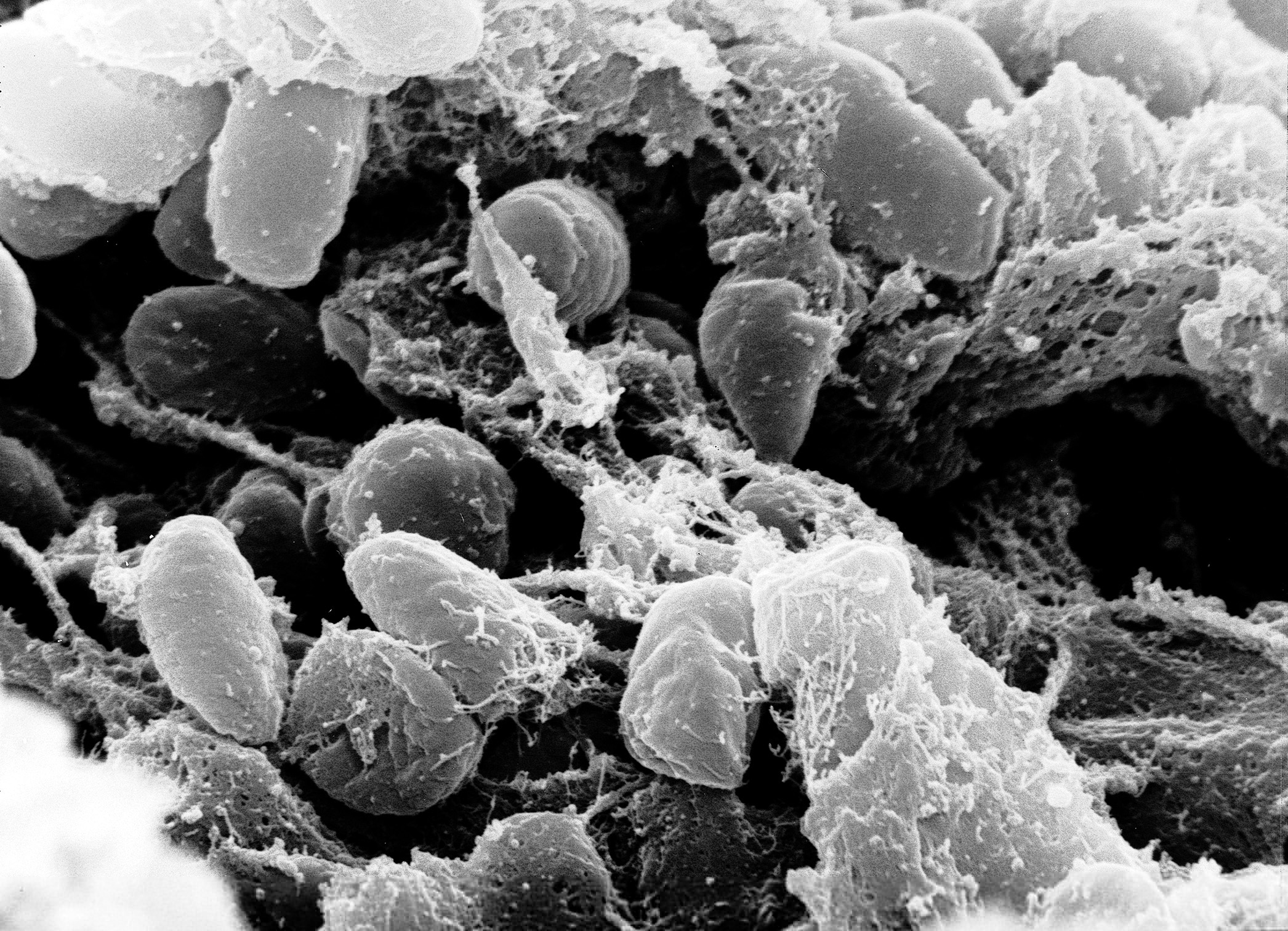
Pneumonic plague
Pneumonic plague is a severe lung infection caused by the bacterium Yersinia pestis.[3] Symptoms include fever, headache, shortness of breath, chest pain, and coughing.[1] They typically start about three to seven days after exposure.[2] It is one of three forms of plague, the other two being septicemic plague and bubonic plague.[3]
Pneumonic plague
Infectious disease
Fever, headache, shortness of breath, cough, hemoptysis[1]
3 to 7 days[2]
Invariably fatal when left untreated[4]
Rare[2]
The pneumonic form may occur following an initial bubonic or septicemic plague infection.[3] It may also result from breathing in airborne droplets from another person or animal infected with pneumonic plague.[1] The difference between the forms of plague is the location of infection; in pneumonic plague the infection is in the lungs, in bubonic plague the lymph nodes, and in septicemic plague within the blood.[3] Diagnosis is by testing the blood, sputum, or fluid from a lymph node.[1]
While vaccines are being developed, in most countries they are not yet commercially available.[1][3] Prevention is by avoiding contact with infected rodents, people, or cats.[1][3] It is recommended that those infected be isolated from others.[2] Treatment of pneumonic plague is with antibiotics.[1]
Plague is present among rodents in Africa, the Americas, and Asia.[3] Pneumonic plague is more serious and less common than bubonic plague.[1] The total reported number of cases of all types of plague in 2013 was 783.[2] Left untreated, pneumonic plague is always fatal.[3] Some hypothesize that the pneumonic version of the plague was mainly responsible for the Black Death that resulted in approximately 75 - 200 million deaths in the 1300s.[2][5]
The most apparent symptom of pneumonic plague is coughing, often with hemoptysis (coughing up blood). With pneumonic plague, the first signs of illness are fever, headache, weakness and rapidly developing pneumonia with shortness of breath, chest pain, cough and sometimes bloody or watery sputum.[6]
The pneumonia progresses for two to four days and may cause respiratory failure and shock. Patients will die without early treatment, some within 36 hours.
Initial pneumonic plague symptoms can often include the following:
Rapidly developing pneumonia with:
Causes[edit]
Pneumonic plague can be caused in two ways: primary, which results from the inhalation of aerosolized plague bacteria, or secondary, when septicemic plague spreads into lung tissue from the bloodstream. Pneumonic plague is not exclusively vector-borne like bubonic plague; instead, it can be spread from person to person. There have been cases of pneumonic plague resulting from the dissection or handling of contaminated animal tissue. This is one of the types of plague formerly known as the Black Death.[7]
Treatment[edit]
Pneumonic plague is a very aggressive infection requiring early treatment, which must be given within 24 hours of first symptoms to reduce the risk of death.[6] Streptomycin, gentamicin, tetracyclines and chloramphenicol are all able to kill the causative bacterium.
Antibiotic treatment for seven days will protect people who have had direct, close contact with infected patients. Wearing a close-fitting surgical mask also protects against infection.[6]
The mortality rate from untreated pneumonic plague approaches 100%.[8]